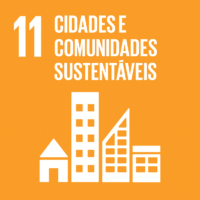Ciência_Iscte
Publicações
Descrição Detalhada da Publicação
Título Revista
Journal of Asia-Pacific Biodiversity
Ano (publicação definitiva)
2022
Língua
Inglês
País
Coreia do Sul
Mais Informação
Web of Science®
Scopus
Google Scholar
Esta publicação não está indexada no Google Scholar
Esta publicação não está indexada no Overton
Abstract/Resumo
The Gobi Desert, Asia's largest desert, covers roughly 1,300,000 square kilometers across southern Mongolia and northern China. One of the world's most iconic deserts, the Gobi is a functioning, healthy ecosystem home to spectacular landscapes that support an impressive variety of biological diversity, including many rare and endangered species. Human activity in the Gobi has existed for at least 5,000 years and several culturally and historically significant archeological sites have been documented in the region; the Gobi continues to support an ancient and enduring nomadic lifestyle. Prehistoric traces of ancient life are also widespread, making the Gobi a hotspot for fossil discoveries. Despite a wealth of natural and cultural heritage the Gobi Desert in Mongolia lacks any recognition as UNESCO World Heritage. This article explores the natural and cultural heritage of the Gobi Desert in Mongolia and using UNESCO's framework for “Outstanding Universal Value,” identifies several sites with exceptional geological, ecological, and ethnological features that we believe meet the criteria for World Heritage status. In the face of looming threats from human interference and climate change, increased recognition and appreciation of Gobi Desert landscapes is crucial to ensure the long-term protection of these irreplaceable sources of life and inspiration.
Agradecimentos/Acknowledgements
--
Palavras-chave
Mongolia,Gobi desert,Desert landscapes,Natural heritage,Cultural heritage,Key biodiversity areas,UNESCO World heritage,SDGs
Classificação Fields of Science and Technology
- Geografia Económica e Social - Ciências Sociais
- História e Arqueologia - Humanidades
Registos de financiamentos
| Referência de financiamento | Entidade Financiadora |
|---|---|
| JP17H000897 | JPS KAKENHI |
| JP19H04362 | JPS KAKENHI |
Contribuições para os Objetivos do Desenvolvimento Sustentável das Nações Unidas
Com o objetivo de aumentar a investigação direcionada para o cumprimento dos Objetivos do Desenvolvimento Sustentável para 2030 das Nações Unidas, é disponibilizada no Ciência_Iscte a possibilidade de associação, quando aplicável, dos artigos científicos aos Objetivos do Desenvolvimento Sustentável. Estes são os Objetivos do Desenvolvimento Sustentável identificados pelo(s) autor(es) para esta publicação. Para uma informação detalhada dos Objetivos do Desenvolvimento Sustentável, clique aqui.

 English
English


